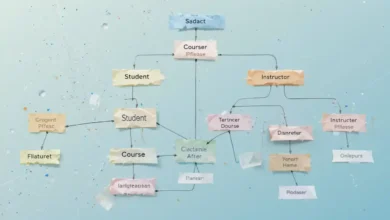Mastering Disk Scheduling: Optimizing Data Access for Efficient Computing

Introduction
In the realm of computer systems, efficient data access is paramount for optimal performance. Disk scheduling plays a crucial role in orchestrating the order in which data requests are serviced, directly influencing the speed and efficiency of data retrieval. Understanding disk scheduling algorithms is essential for system administrators, developers, and anyone seeking to optimize computing processes.
The Basics of Disk Scheduling
Disk scheduling is the process of determining the order in which pending input/output (I/O) requests are serviced by a disk subsystem. It ensures that data is accessed in a manner that minimizes seek time and maximizes throughput, thus improving overall system performance.
Importance of Disk Scheduling
Efficient disk scheduling is vital for enhancing system responsiveness and throughput. By minimizing the movement of the disk’s read/write head and optimizing data access patterns, disk scheduling algorithms help reduce latency and improve the overall user experience.
Common Disk Scheduling Algorithms
Several disk scheduling algorithms have been developed to address different performance considerations. These include First-Come, First-Served (FCFS), Shortest Seek Time First (SSTF), SCAN, C-SCAN, LOOK, and C-LOOK, each with its own advantages and trade-offs.
First-Come, First-Served (FCFS)
FCFS is the simplest disk scheduling algorithm, servicing requests in the order they arrive. While easy to implement, FCFS can lead to poor performance due to high average seek times, especially in scenarios with mixed I/O patterns.
Shortest Seek Time First (SSTF)
SSTF selects the request closest to the current position of the disk’s read/write head, minimizing seek time. Although efficient in reducing seek times, SSTF may suffer from starvation issues, where requests further from the current position are consistently delayed.
SCAN and C-SCAN
SCAN and C-SCAN algorithms move the disk’s read/write head in a sweeping motion across the disk’s surface, servicing requests along the way. SCAN traverses the disk in one direction, while C-SCAN scans in a circular fashion, improving fairness and reducing variance in service times.
LOOK and C-LOOK
LOOK and C-LOOK are variants of SCAN and C-SCAN that eliminate unnecessary sweeps to the end of the disk, enhancing efficiency by reducing head movement. These algorithms adjust the scanning direction dynamically based on the direction of pending requests.
Optimizing Disk Scheduling Performance
Optimizing disk scheduling performance involves selecting the most appropriate algorithm based on workload characteristics and system constraints. Additionally, techniques such as I/O scheduling policies, request reordering, and prefetching can further enhance performance and resource utilization.
Real-World Applications of Disk Scheduling
Disk scheduling principles are applied in various computing environments, including operating systems, database management systems, and storage systems. By implementing efficient disk scheduling strategies, organizations can improve the responsiveness and reliability of their computing infrastructure.
Future Trends in Disk Scheduling
As computing technologies continue to evolve, disk scheduling algorithms are expected to adapt to emerging storage architectures, such as solid-state drives (SSDs) and hybrid storage systems. Future research may focus on developing intelligent scheduling mechanisms that leverage machine learning and predictive analytics to anticipate and optimize data access patterns.
Conclusion
Disk scheduling is a fundamental aspect of computer systems that directly impacts performance and user experience. By understanding the principles and algorithms underlying disk scheduling, organizations can optimize data access, improve system responsiveness, and enhance overall efficiency.
FAQs
- What is disk scheduling?
Disk scheduling is the process of determining the order in which pending input/output (I/O) requests are serviced by a disk subsystem, with the aim of minimizing seek time and maximizing throughput.
- Why is disk scheduling important?
Efficient disk scheduling is crucial for enhancing system responsiveness, minimizing latency, and improving overall user experience in computing environments.
- What are some common disk scheduling algorithms?
Common disk scheduling algorithms include First-Come, First-Served (FCFS), Shortest Seek Time First (SSTF), SCAN, C-SCAN, LOOK, and C-LOOK, each with its own advantages and trade-offs.
- How can disk scheduling performance be optimized?
Disk scheduling performance can be optimized by selecting appropriate algorithms, implementing I/O scheduling policies, employing request reordering techniques, and utilizing prefetching mechanisms.
- What are the real-world applications of disk scheduling?
Disk scheduling principles are applied in operating systems, database management systems, storage systems, and other computing environments to improve the efficiency and reliability of data access operations.




